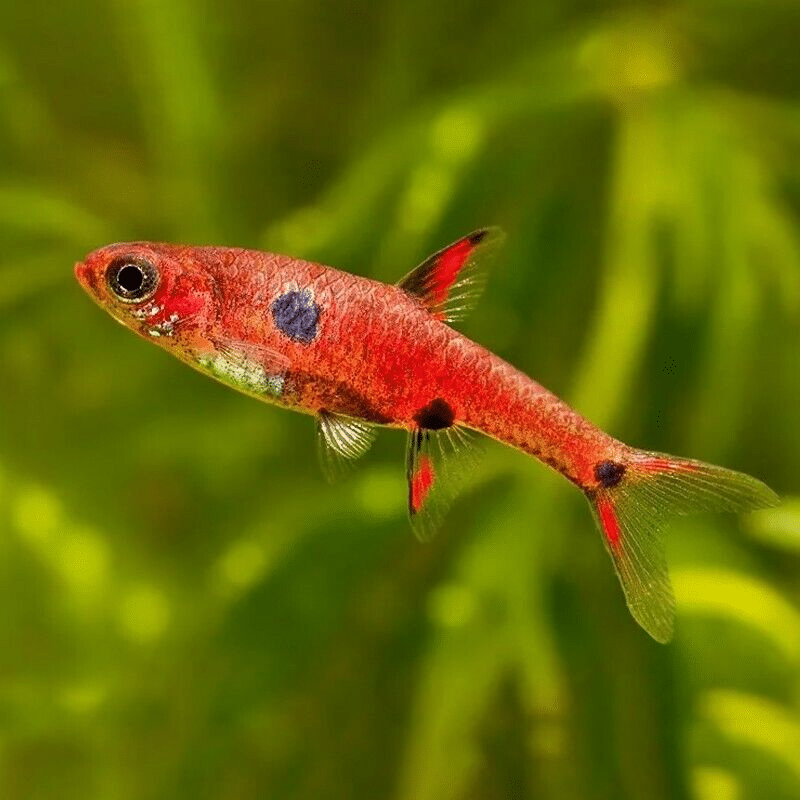10 X Dwarf Rasboras – Boraras Maculatus – Cyprinid Fish
£18.00
10 X Dwarf Rasboras – Boraras Maculatus – Cyprinid Fish: A comprehensive guide to these vibrant and peaceful cyprinid fish, including their scientific and common names, habitat, tank setup, diet and nutrition, size and growth rate, behavioral traits, care level, breeding and reproduction, health and disease prevention, optimal water conditions, lifespan, and additional interesting facts. Perfect for nano and community aquariums.
999 in stock
Attributes: 10 X Dwarf Rasboras – Boraras Maculatus – Cyprinid Fish
Short Description: A comprehensive guide to the 10 X Dwarf Rasboras, including their scientific and common names, habitat, tank setup, diet and nutrition, size and growth rate, behavioral traits, care level, breeding and reproduction, health and disease prevention, optimal water conditions, lifespan, and additional interesting facts.
Product Categories: Rasboras, Fish
Product Description:
The 10 X Dwarf Rasboras, scientifically known as Boraras Maculatus, are a popular choice among fish enthusiasts due to their vibrant colors and peaceful nature. Also known as the Dwarf Rasbora or Spotted Rasbora, these small cyprinid fish are native to Southeast Asia and are commonly found in slow-moving streams, ponds, and flooded areas.
Habitat: In their natural habitat, Dwarf Rasboras inhabit densely vegetated areas with soft, acidic water. They prefer areas with leaf litter and submerged roots, which provide them with hiding spots and mimic their natural environment.
Tank Setup: To recreate their natural habitat, it is recommended to set up a well-planted aquarium with plenty of hiding places. A tank size of at least 10 gallons is suitable for a small group of Dwarf Rasboras. The water should be slightly acidic with a pH range of 6.0-7.0 and a temperature between 72-82°F (22-28°C). It is important to maintain good water quality and provide gentle filtration.
Diet and Nutrition: Dwarf Rasboras are omnivorous and have a small mouth, so they require small-sized food. Their diet should consist of high-quality flake or pellet food supplemented with live or frozen foods such as brine shrimp, daphnia, and micro worms. It is recommended to feed them small amounts multiple times a day to ensure they receive adequate nutrition.
Size and Growth Rate: These tiny fish reach a maximum size of around 0.8 inches (2 cm) in length. They have a slow growth rate and may take several months to reach their full size.
Behavioral Traits: Dwarf Rasboras are peaceful and social fish that thrive in groups. They are known for their active nature and can often be seen swimming in the middle and upper levels of the aquarium. They are compatible with other small, non-aggressive fish species and should not be kept with larger, aggressive fish that may intimidate or harm them.
Care Level: Dwarf Rasboras are relatively easy to care for, making them suitable for both beginner and experienced fish keepers. They are hardy and adaptable, but proper water conditions and a well-maintained aquarium are essential for their well-being.
Breeding and Reproduction: Breeding Dwarf Rasboras can be challenging, but with the right conditions, it is possible. They are egg scatterers, and a separate breeding tank with fine-leaved plants and a mesh or marbles at the bottom is recommended. The water temperature should be slightly higher (around 82°F or 28°C) to stimulate breeding behavior. After spawning, the parents should be removed to prevent them from eating the eggs.
Health and Disease Prevention: Providing a clean and well-maintained aquarium is crucial for the health of Dwarf Rasboras. Regular water changes, proper filtration, and monitoring water parameters are essential. They are generally hardy fish but can be susceptible to common fish diseases such as ich and fin rot. Quarantining new fish before introducing them to the main tank can help prevent the spread of diseases.
Optimal Water Conditions: Dwarf Rasboras thrive in soft, slightly acidic water with a pH range of 6.0-7.0. The temperature should be maintained between 72-82°F (22-28°C). It is important to avoid sudden fluctuations in water parameters to prevent stress and health issues.
Lifespan: With proper care, Dwarf Rasboras can live for approximately 3-5 years. Providing them with a suitable environment, a balanced diet, and a stress-free atmosphere can contribute to their longevity.
Additional Interesting Facts: Dwarf Rasboras are known for their vibrant colors, which intensify during breeding. They are a shoaling species, meaning they prefer to be kept in groups of at least 6-8 individuals. Their small size and peaceful nature make them an excellent choice for nano and community aquariums. Despite their small size, they are active swimmers and can bring life and color to any aquarium setup.

















Reviews
There are no reviews yet.